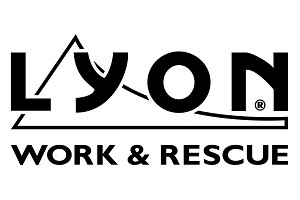In reply to simondgee:
> My understanding is that its the stength of the anchor to support more than 1 person that is relevant.
Yes and no. 2 ways of assessing equipment suitability.
- 1: You make extensive calculations of the expected loads, both static and dynamic, in every foreseeable configuration, apply a safety margin to come up with minimum strengths for each configuration, direction, etc, take into account potential material variations in performance for age, environmental factors and gremlins. Think out every possible missuse scenario, potential design issues, compatibility and interference with other equipment. Then thoroughly test the equipment and look for farther testing data from the manfacturer and independent bodies, eventualy coming to a final 'report' on whether a certain piece of equipment is suitable and the best choice for its specific use.
Also be prepared to present all of it in front of a judge if anything happens and convince the jury you were competent to do so and did all reasonable steps and due dilligence to comply with your duty of care and relevant legislation.
- 2: Let the manufacturer and standards bodies do all that and simply choose.equipment that has been tested and certified for the use you intend.
As a user you do not need to know the content of the standards and what strength or parameters the equipment has been tested to, given you follow manufacturer guidelines.
Anything happens, you tell the judge you used a piece of equipment that was certified for the use, and complying with the relevant regulations and standards for the protection against falling from heights, and that he should take it with the manufacturer (and/or the installer) if he wants to throw the book at someone.
So with option '1', yes, the strength of the anchor is one of the many variables you have to consider. With option '2', you just chose the standard covering the expected use as defined.
PPE and en795, as defined, apply when protecting a single user. Weight is irrelevant (other than equipment that might have an stated WLL besides the usual SWL of '1 person'.) The person being protected is the climber. The one on the ground is not getting any protection as there is no risk of a fall from height for the belayer.
> So being a 2 person load (being a top rope) were it to fail (obviously not a reality) then the 'affords all persons the same level of protection as a personal (1 person) anchor system' applies.
It is not a 2 person load. It is a 1 person load, where the forces at the anchor are doubled. When it comes to bureaucracy is all about semantics.
> Completely agree but trying to undertand the difference between the spec being applied to a Stal or Anchora and how it works in normal outdoor top roping...Ive always used and undertsood the double crab thing as areducing in rope wear thing but it would also be a a way of ticking a box.
> My suspicion is that its probably DMM and Lyon applying the spec so they can sell products (even though it isnt a requirement in use)?
Belay anchors with possible multiple users in mind cannot be certified as PPE or through en795 only. That's when the TS/CEN comes in. If they were not certified to anything that wouldn't bode well for sales as the climbing wall would have to go through 'option 1' above. If they certified them as en795 they would have to write "for single user only" which would limit their use.
In outdoor climbing you are looking at en959 which does not limit the number of users. And 'industry standard' and 'best practice' thankfully holds the most weight with regards its use. (en795 anchors already installed or held in stock when it was introduced were assumed grandfathered in).
If you were to try and apply WAH regulations to the outdoors in a recreational scenario (including guiding, courses, etc) then you are getting in a whole world of pain in for example, ensuring they are/were installed and are periodically tested in compliance with bs7883
Post edited at 14:27
